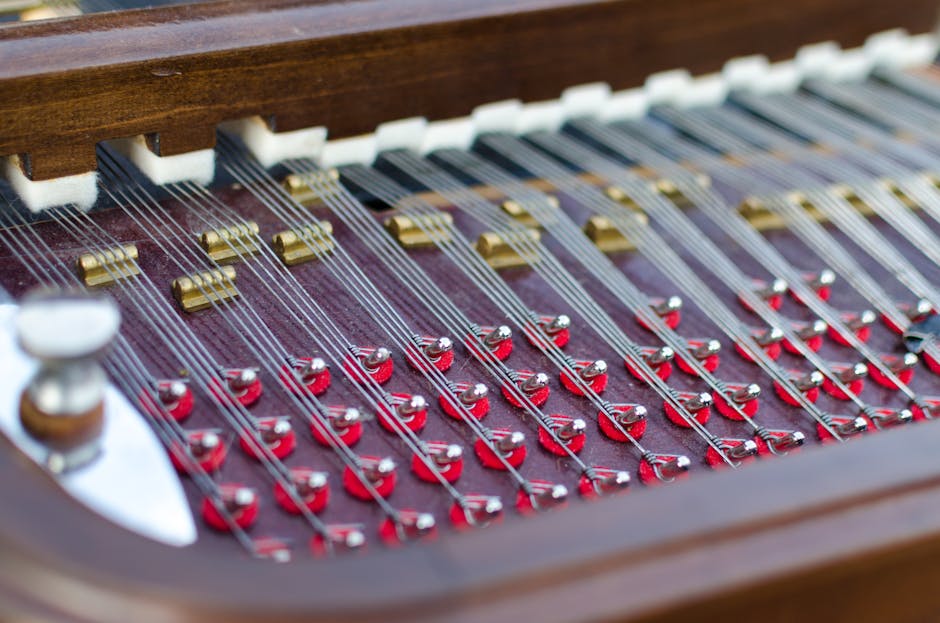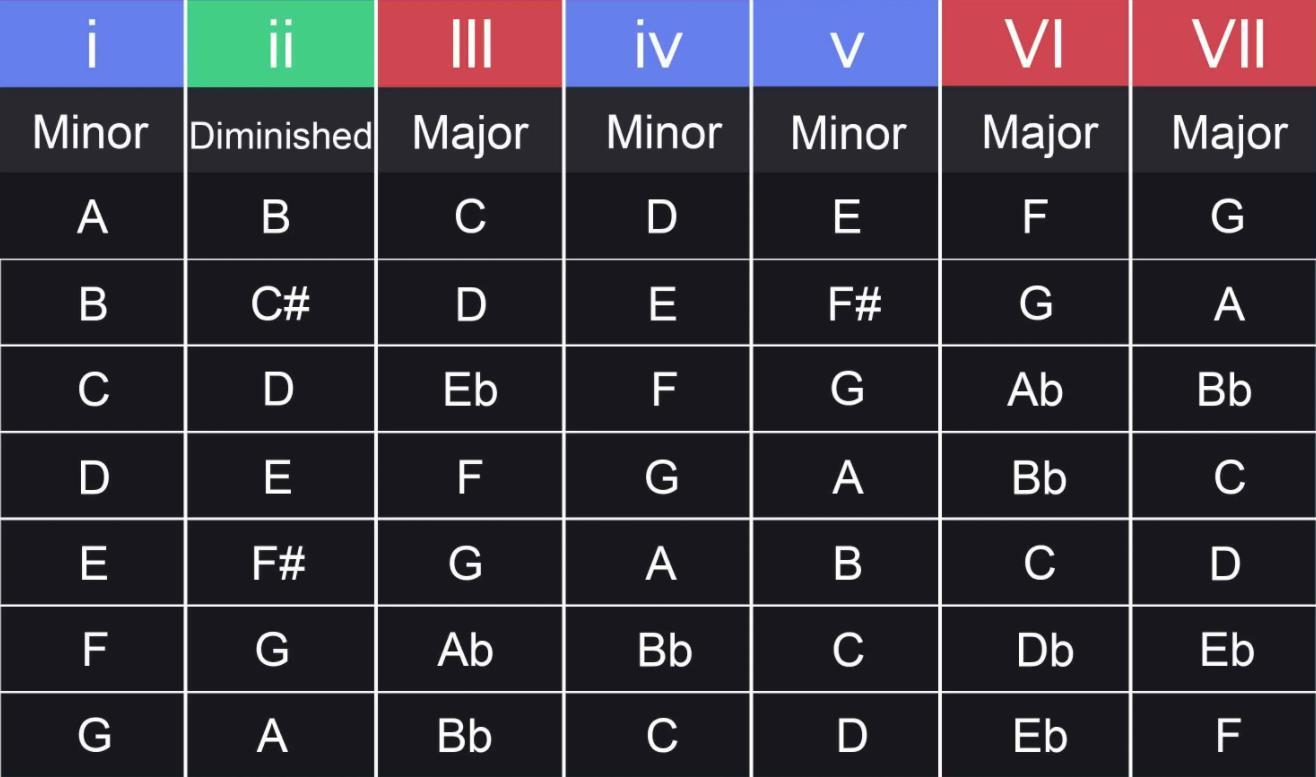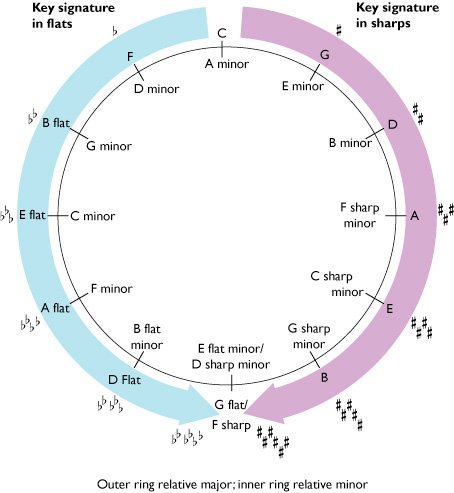Have you ever found yourself rocking out to a chords-essential-acoustic-guitar-basics/” title=”Mastering Your First Chords: Essential Acoustic Guitar Basics”>catchy tune, only to realize that it’s the same four chords over and over again? Well, don’t be fooled – those common chord progressions hold the key to unlocking a world of musical possibilities! In this article, we’re going to dive deep into the power of those trusty chords and explore how they can take your music to the next level. So grab your air guitar and get ready to unleash the magic of common chord progressions like never before!
Contents
- 1 Understanding the Foundation of Music Through Chord Progressions
- 2 The Role of the I-IV-V Progression in Popular Music
- 3 Exploring Minor Chord Progressions for Emotional Depth
- 4 Navigating Through the Circle of Fifths for Song Creation
- 5 Crafting Unique Soundscapes with Modal Mixture
- 6 Leveraging Secondary Dominants for Tension and Resolution
- 7 Incorporating Jazz Chords into Modern Music Composition
- 8 FAQs
- 9 In Conclusion, Let’s Play Some Sweet Sweet Music!
Understanding the Foundation of Music Through Chord Progressions
Have you ever listened to a song and thought, ”Wow, this chord progression really slaps”? Well, my friend, you’re not alone. Chord progressions are the backbone of music, the secret sauce that makes our ears perk up and our hearts skip a beat. So let’s dive into the nitty gritty of how chord progressions work and why they’re so darn important.
Picture this: you’re sitting at the piano, fingers poised to play your first chord. Maybe you start with a classic I-IV-V progression, or maybe you’re feeling spicy and throw in a ii-V-I for good measure. No matter what you choose, each chord has its own unique flavor that adds depth and emotion to your music. It’s like creating a mouthwatering dish, but instead of seasoning, you’re using notes and harmonies to tickle your listeners’ earbuds.
But wait, there’s more! Chord progressions aren’t just random combinations of notes thrown together willy nilly. Oh no, they follow specific patterns and rules that have been passed down through the ages. From the haunting allure of a minor ii-V-i progression to the triumphant majesty of a V-I cadence, each progression has its own story to tell, its own mood to convey. It’s like a musical choose-your-own-adventure, where each chord leads you down a different path to a new and exciting destination.
So the next time you find yourself humming along to your favorite song, take a moment to appreciate the genius behind the chord progressions that make it shine. They may not be the flashy solo or catchy lyrics, but they’re the unsung heroes that hold it all together. Without them, music would be like a cake without frosting, a car without wheels, a joke without a punchline. In other words, totally un-freaking-believable.

The Role of the I-IV-V Progression in Popular Music
Have you ever found yourself bopping your head to a catchy song, wondering why it sounds so familiar? Well, chances are it’s because of the classic I-IV-V progression that dominates popular music.
Let’s break it down for you in plain English (because who needs another music theory lesson, right?):
- The I chord is like the bread of a sandwich – it’s the foundation that holds everything together.
- The IV chord is the creamy peanut butter that adds some flavor and dimension to the mix.
- Now, the V chord? That’s the jam – it’s the sweet and juicy component that ties everything together in perfect harmony.
So, next time you’re listening to your favorite pop song and can’t help but sing along, just remember – it’s all thanks to the magical I-IV-V progression. It’s like the secret sauce that makes your favorite dish taste oh so good!
Exploring Minor Chord Progressions for Emotional Depth
Minor chord progressions have the power to evoke a wide range of emotions, from sadness to longing to contemplation. By exploring different combinations of minor chords, you can create music that truly tugs at the heartstrings (or maybe just gives your audience the feels).
One key element to consider when crafting minor chord progressions is the use of tension and resolution. By incorporating dissonant intervals and unexpected chord changes, you can create a sense of unease or anticipation that makes the eventual resolution all the more satisfying. It’s like the musical equivalent of telling a joke with a killer punchline.
Another trick to adding emotional depth to your minor chord progressions is to play around with dynamics. By varying the volume and intensity of your playing, you can create a sense of drama and build tension throughout your piece. It’s like a rollercoaster ride for your ears, except hopefully without the motion sickness.
So next time you sit down to write some music, don’t be afraid to delve into the world of minor chord progressions. It’s a playground of emotions waiting to be explored, and who knows – you might just stumble upon the perfect combination that leaves your audience reaching for the tissues.

So you want to create the next chart-topping hit, huh? Well, buckle up and get ready to navigate your way through the mystical world of the Circle of Fifths! This musical compass will guide you through the key signatures and harmonies that will make your song stand out from the rest.
First things first, let’s break it down for all you beginners out there. The Circle of Fifths is like the GPS of music theory, helping you find your way around different keys and chord progressions. But don’t worry, you don’t need a degree in music to understand it – just a good sense of humor and a willingness to learn.
Now, grab your pen and paper because we’re about to dive into the deep end of song creation. The Circle of Fifths will show you which chords work well together and help you build a strong foundation for your melody. Remember, music is all about balance and harmony, so don’t be afraid to experiment and mix things up a bit!
So, what are you waiting for? Start mapping out your journey through the Circle of Fifths and let your creativity run wild. Remember, there are no wrong turns in music – just opportunities to try something new and unexpected. Who knows, you might just stumble upon the next big hit!

Crafting Unique Soundscapes with Modal Mixture
So, you want to take your music to the next level by ? Well, you’ve come to the right place! Let’s dive into this magical realm of music theory and explore how modal mixture can open up a whole new world of possibilities in your compositions.
- First off, let’s talk about what modal mixture actually is. Essentially, it’s the mixing and matching of different modal scales within a single piece of music. This can lead to some interesting harmonic and melodic combinations that can really spice up your sound.
- One of the key benefits of using modal mixture is that it can add a touch of unpredictability to your music. By blending different modal scales together, you can create unexpected twists and turns that will keep your listeners on their toes.
- Another great thing about modal mixture is that it allows you to explore new tonal colors and textures in your music. Whether you’re looking to add a touch of darkness with the Phrygian mode or a hint of mystery with the Mixolydian mode, modal mixture gives you the tools to experiment and push the boundaries of your sound.
So, don’t be afraid to get creative and play around with different modal scales in your compositions. Who knows, you might just stumble upon a combination that takes your music to a whole new level!
Leveraging Secondary Dominants for Tension and Resolution
So, you’re tired of your music sounding predictable and lacking excitement? Well, fear not, because I’ve got just the solution for you – secondary dominants! These little beauties are like the secret spice that can take your chord progressions from bland to brilliant in no time.
By adding secondary dominants into your compositions, you can create tension and resolution that will keep your listeners on the edge of their seats. Imagine the satisfying feeling of setting up a dominant chord that leads into a unexpected resolution - the emotional payoff is so worth it!
But wait, there’s more! Secondary dominants can also be used to add color and depth to your music. Want to spice up a mundane chord progression? Just throw in a secondary dominant and watch as it elevates the entire piece to a whole new level.
So, next time you’re feeling stuck in a musical rut, remember the power of secondary dominants. With a little bit of creativity and experimentation, you can take your compositions to new heights and keep your listeners coming back for more.
Incorporating Jazz Chords into Modern Music Composition
Nowadays, there is nothing cooler than incorporating jazz chords into your modern music compositions. Jazz chords add a touch of sophistication and jazzy flair to even the simplest of tunes. Let’s dive right into how you can jazz up your music with some fancy chords!
First off, let’s talk about the almighty dominant 7th chord. This chord is like the Beyoncé of jazz chords – powerful, sassy, and always stealing the show. Incorporate some dominant 7th chords into your progressions to instantly add some spicy flavor to your music.
Next up, don’t be afraid to experiment with extended chords. Throw in some 9ths, 11ths, and 13ths to really push the boundaries of traditional harmony. Who says you can’t have a little fun with your chords?
And finally, let’s not forget about the magic of chromatic harmony. Adding in some chromatic passing chords or substitutions can take your music to a whole new level. Embrace the unexpected and watch your compositions soar to new heights!
FAQs
Why should I learn about common chord progressions?
Well, do you want to be stuck playing “Chopsticks” on the piano for the rest of your life? Heed my words: common chord progressions are the keys to unlocking a whole new world of musical possibilities!
How can common chord progressions enhance my songwriting?
Imagine your song is a delicious pizza. Common chord progressions are the secret sauce that adds flavor and depth to your creation. They can help you build tension, create resolution, and keep your listeners hooked from the first bite to the last slice.
Are common chord progressions easy to learn?
As easy as stealing candy from a baby! Okay, maybe not that easy, but with a little practice and patience, you’ll be strumming along like a pro in no time. Plus, once you understand the basics, you can start experimenting and adding your own unique twists to create killer tunes.
Can I use common chord progressions in different genres of music?
Absolutely! Common chord progressions are like the chameleons of the music world – they can adapt to fit any style, from pop to rock to jazz. So whether you’re a country crooner or a hip-hop head, you can rest assured that common chord progressions have got your back.
In Conclusion, Let’s Play Some Sweet Sweet Music!
Now that you have unlocked the power of common chord progressions, go forth and serenade the world with your musical talents! Whether you’re strumming along on your guitar or tickling the ivories on the piano, remember that music has the power to bring joy, laughter, and maybe even a few tears to those who listen. So go ahead, show off those killer chord progressions and let your inner rockstar shine! And remember, when in doubt, just play a little G-C-D and watch the magic happen. Keep on jamming, music maestro!



